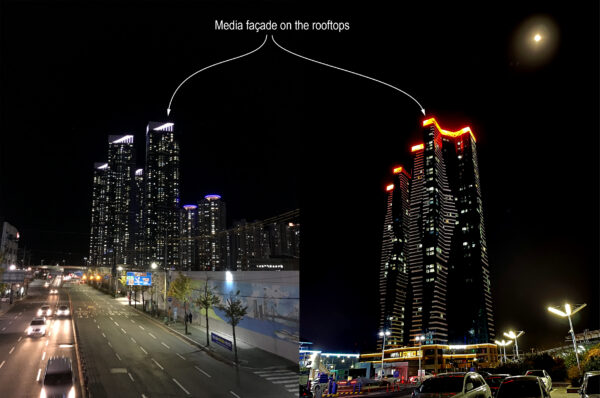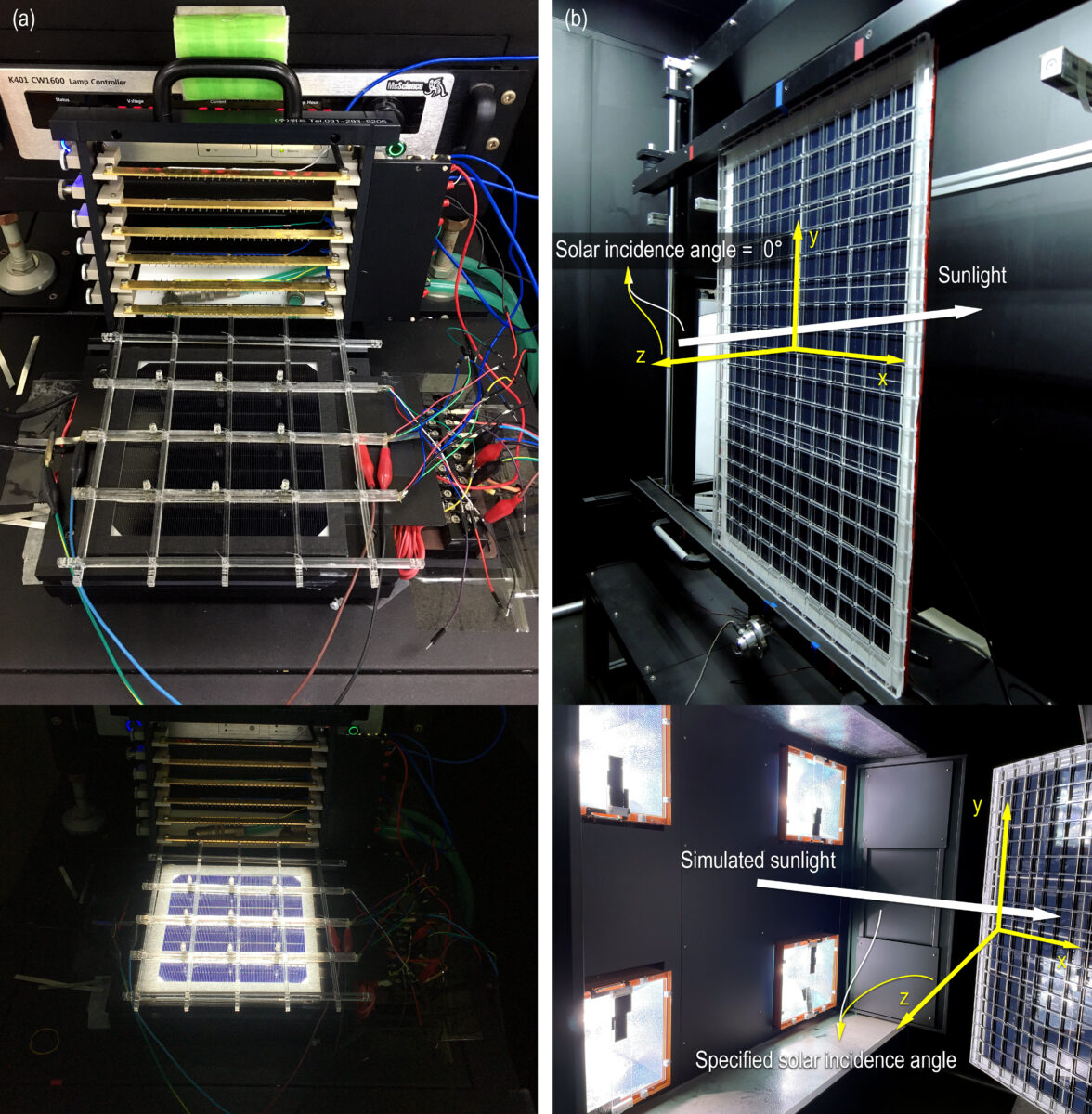Scientists from the Korea Institute of Energy Research (KIER) have developed a grid-type light-emitting diode (LED) display with reflective walls that can be used in combination with building-integrated photovoltaics (BIPV).
“LED displays are electricity-devouring monsters, consuming a lot of electricity at night without electricity generation,” the research's lead author, Dong-Youn Shin, told pv magazine. “If grid-type LED displays with BIPV systems are installed there, they would considerably reduce electricity consumption. Many buildings in South Korea have media facade functions and, however, BIPV has been considered to have a poor aesthetic value due to its dull black color.”
The researchers conceived a grid-type LED display that, by contrast, takes advantage of the black color of BIPV as a backdrop, with the BIPV system behind the LED display not being visible to the human eye over the viewing distance of 172 m.
They built the display with reflective sidewalls to allow more sunlight to be reflected toward the solar cells. “Our display is much cheaper than conventional transparent LED displays because conventional transparent LED displays are made with photolithographically patterned indium tin oxide (ITO) glasses,” Shin stated. “Instead, a grid-type LED display is basically made with cost-effective acrylic plates.”
Conventional detachable plane-type LED modules have an air gap between the transparent LED module and the BIPV panels, which reduces the overall optical transmittance of the system. In the upright grid-type LED modules created by the Korean group, instead, narrow bars are connected and form upright grids with LEDs attached, which let more sunlight pass through the voids between the modules.
This system configuration would ensure minimal power yield losses caused by shading. “The grid design leads to a minimum shading loss in the range of -3.67% and -4.93%, considered a record low when compared to -22.59% with conventional transparent LED films,” the scientists said.
Through a series of tests, the team also found that the relative maximum power of a 24-cell solar module is higher than 85.6% with highly reflective walls on an upright grid-type LED module, even at the incident angle of 60 degrees, compared to 70.6% with opaque walls. It also found that the system screen time may reach up to 21.74 hours in a self-standing mode.
The system was presented in the paper “Grid-type LED media façade with reflective walls for building-integrated photovoltaics with virtually no shading loss,” which was recently published in Applied Energy. “Generally speaking, one invention contributes to one industry only,” Shin stated. “However, grid-type LED displays would contribute to not only electricity-related industries but also multiple industries like PVs, BIPVs, building construction, displays, advertising, and tourism.”

Image: Korea Institute of Energy Research (KIER)
This content is protected by copyright and may not be reused. If you want to cooperate with us and would like to reuse some of our content, please contact: editors@pv-magazine.com.




1 comment
By submitting this form you agree to pv magazine using your data for the purposes of publishing your comment.
Your personal data will only be disclosed or otherwise transmitted to third parties for the purposes of spam filtering or if this is necessary for technical maintenance of the website. Any other transfer to third parties will not take place unless this is justified on the basis of applicable data protection regulations or if pv magazine is legally obliged to do so.
You may revoke this consent at any time with effect for the future, in which case your personal data will be deleted immediately. Otherwise, your data will be deleted if pv magazine has processed your request or the purpose of data storage is fulfilled.
Further information on data privacy can be found in our Data Protection Policy.